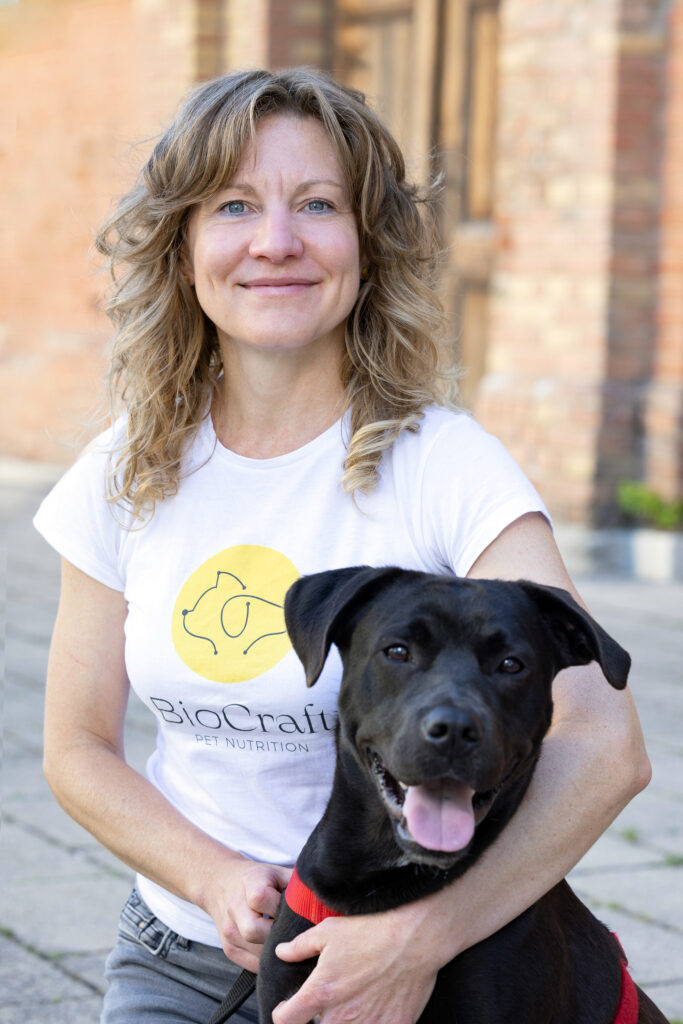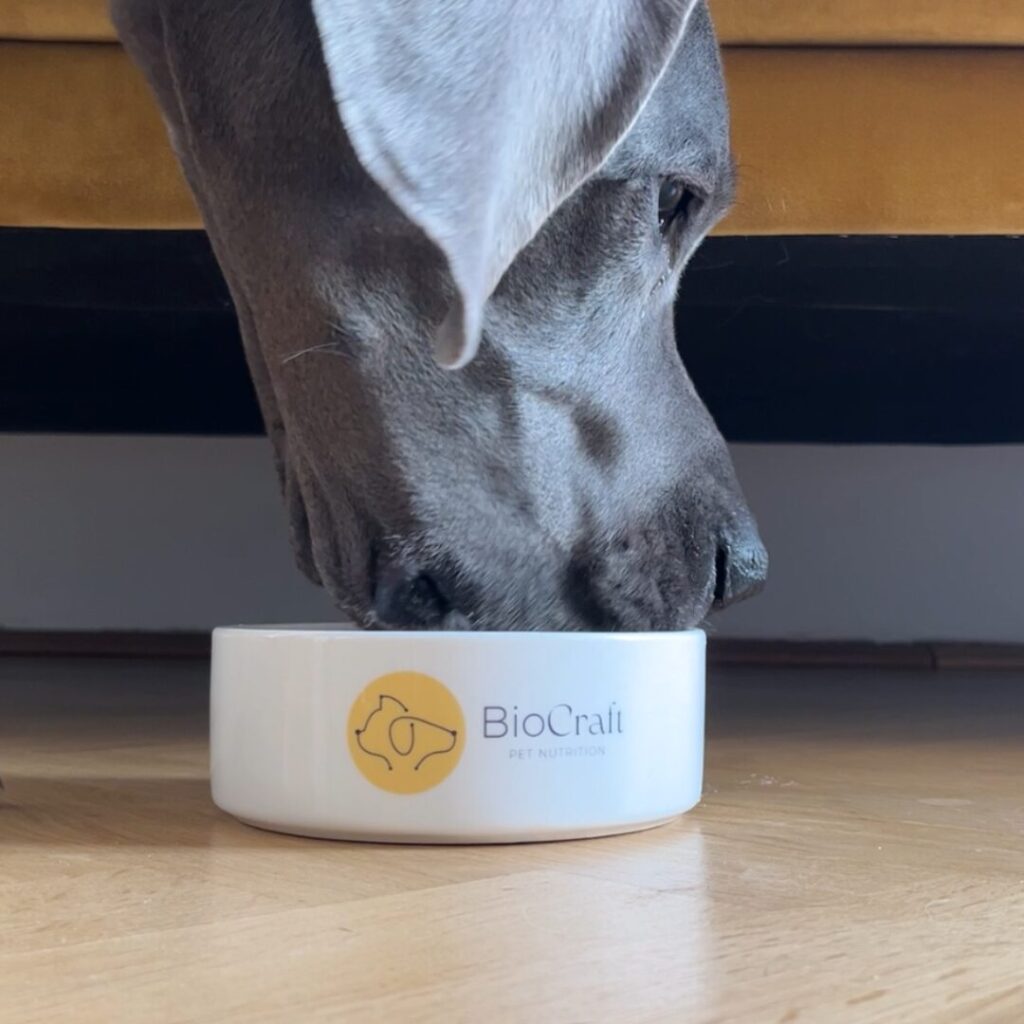BioCraft Pet Nutrition’s Cultivated Mouse Meat Now Costs the Same as Premium Pet Food
5 Mins Read
Austrian-American cultivated meat startup BioCraft Pet Nutrition has achieved price parity with premium pet food by reimagining the growth media for its mouse meat.
BioCraft Pet Nutrition has achieved a breakthrough in its production process that allows it to make its cultivated mouse meat for dogs and cats at the same price as premium pet food.
Along with scalability, cost has been a major hindrance to the progress of cultivated meat, which requires expensive growth media and bioreactors to make. Finding solutions to make these proteins more affordable has been a priority for companies in this space.
And while there have been some major strides – startups have managed to bring down costs by 99% in less than a decade – McKinsey suggests it will still take until 2030 for cultivated meat to reach price parity with its conventional counterpart.
But BioCraft (formerly called Because Animals) says its cultivated meat now has a sale price of $2-2.50, on par with premium meat in pet food. It has achieved this milestone by reimagining the use of growth media to both cut costs and boost the nutritional profile of its mouse meat.
“Achieving price parity and a robust nutritional profile for pets were the only elements holding back cultivated meat for the pet food industry – and BioCraft has now achieved both,” said founder and CEO Shannon Falconer.
The startup now aims to put its cultivated meat in branded pet food on shelves by early 2026.
How BioCraft Pet Nutrition makes affordable cultivated meat

Typically, growth media – the mix of proteins, sugar and nutrients that feed animal cells in a bioreactor – cost hundreds of dollars per litre. Proteins represent the most expensive component of the growth media, while individually produced amino acids are another costly element.
One of the key processes to reduce costs is to move away from animal-derived materials and provide nutrients from crops instead. This is something BioCraft focused on too, developing a nutrient medium composed of plant-based ingredients widely used in pet food applications (and therefore already approved by food safety regulators).
“By taking this approach, we simultaneously developed a nutrient that is both suitable for our cells and suitable for pet nutrition. This also means that we don’t need to perform any downstream processing as all of the ‘inputs’ we feed to our cells are already feed-approved,” explained Falconer.
“But most importantly, by not separating our nutrient formulation and our cells in any downstream processing steps, BioCraft is able to retain those key water-soluble nutrients that only animal cells manufacture (for example, taurine), and which are released by actively growing cells into the surrounding environment,” she added.
“What we’re left with in the end is a nutrient-dense slurry of animal cells, animal-derived nutrients and plant-derived nutrients, which is essentially what meat from an herbivore (like a cow) actually is. This slurry can then be used as a substitute for traditional animal-based slurry ingredients, which pet food manufacturers already use.”
While the nutrient-rich growth media is typically discarded, BioCraft discovered it could be specifically formulated to provide a nutritious part of the end product, which more closely mimics conventional meat. This leads to no waste of nutrient inputs, which are leveraged to bolster the final nutritional value of the product.
BioCraft’s mouse meat slurry is said to be rich in essential nutrients like protein, DHA, EPA (an omega-3 fatty acid), and taurine. This emphasis on nutrition for dogs and cats was a catalyst for decreasing the cultivated meat’s costs. “By focusing on the application of pet food, BioCraft’s approach is very different from that being pursued by companies focused on cultivated meat for humans,” Falconer said.
“Specifically, where the main focus for the human food industry is making the product taste and look like the meat people are used to (and at the price point they’re used to), the main focus for BioCraft is ensuring a nutritional profile that is as good or better than the meat pet food manufacturers are used to (and at the price point they’re used to).”
Regulatory plans and B2B business model

BioCraft’s breakthrough comes the same month British cultivated meat startup Meatly announced a drastic reduction in culture media costs for its pet food. The latter is on the verge of receiving the regulatory greenlight in the UK, with its cultivated meat cans expected to be on shelves imminently. Falconer remained tight-lipped when asked about her company’s regulatory plans, but teased an announcement soon.
Instead of rolling out its own packaged products, BioCraft – which has brought in $6.7M in funding to date – will provide its cultivated meat ingredients to other manufacturers for use in pet food formulations. “As a mission-based company whose priority is to remove animals from the supply chain, moving as much volume of cultivated meat as possible is key,” said Falconer.
“Building a brand that is able to replace hundreds of millions of kg of animal meat used in pet food per year would take a very, very long time. And the planet doesn’t have that time. Working with pet food manufacturers who already have the consumer base and are already purchasing that very same meat ingredient that we’d like to replace makes much more sense to us than selling B2C,” she added.
Cultivated meat has been a hot topic in the US of late, with the states of Florida and Alabama banning the production and sale of these products in an election year, claiming food safety issues and citing their aim to safeguard the local livestock industry. Both moves have been widely criticised, especially since the USDA and FDA have both cleared cultivated meat for sale after rigorous testing processes.
“In the early days of scaled commercialisation, the demand for cultivated meat will be much higher than initial supply will be able to fill,” said Falconer, whose company has also developed a chicken cell line. “During that time, pet food manufacturers can simply focus on selling in other states.”
Pet food puts an enormous toll on the planet – in the US alone, dry cat and dog food production amounts to 25-30% of all animal-consumption-related emissions. Research has also suggested that if pets were a nation, they’d be the fifth-largest meat-consuming entity. It’s figures like these that have prompted companies like BioCraft and Meatly to produce climate-friendly pet food. Others in the space include Bene Meat Technologies, Wild Earth, and Bond Pet Foods.



